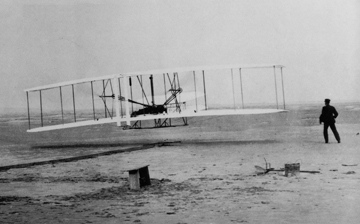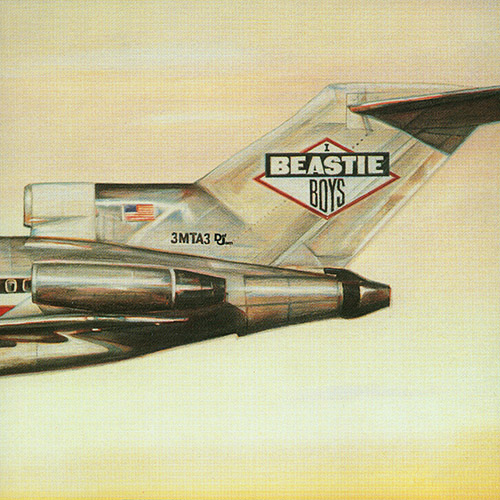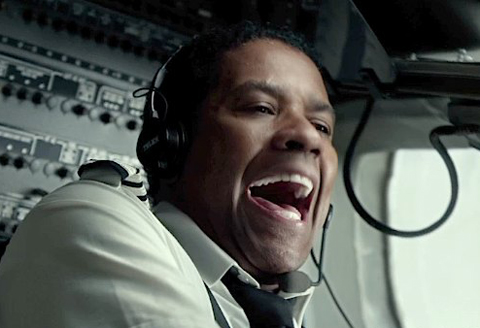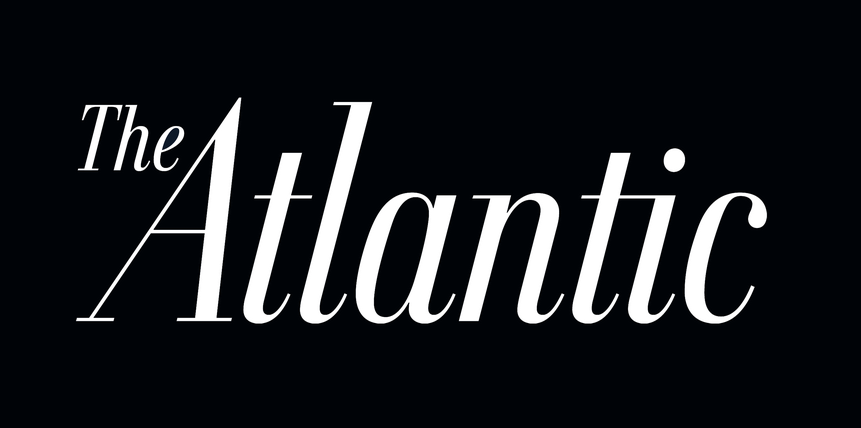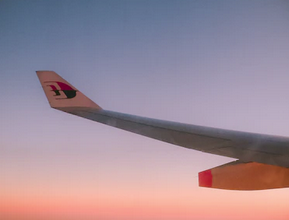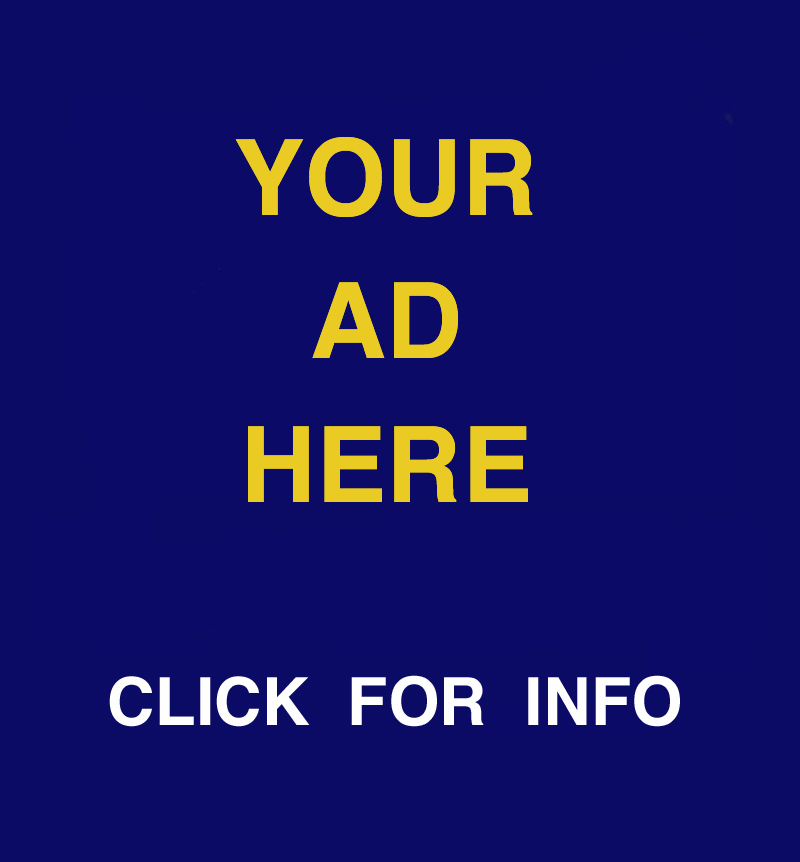Thoughts on the Movie “Sully”
UPDATE: January 17, 2017
THEY MADE ME do it. Everybody from the journalist Peter Greenberg to my sister’s boyfriend implored me to finally go and watch “Sully,” the Clint Eastwood-directed movie starring Tom Hanks as U.S. Airways captain Chesley Sullenberger, guardian angel of flight 1549, the engineless Airbus that splashed into the Hudson River eight years ago. When the movie was first released, back in September, I refused to see it (see the original post, below). I’d watched too many big-screen butcher jobs — the chokingly awful “Flight,” for example, with Denzel Washington — and didn’t need the aggravation. But then the testimonials started coming in, boasting of the film’s surprising levels of accuracy and authenticity. This, I was told again and again, is the rare Hollywood movie that gets the pilot stuff right.
Why do I listen to these people?
The screening took place at my friend Todd’s home theater in Deerfield, Illinois. Todd, like me, is an airline pilot who flies 767s. Todd was a good viewing partner because, like me, he was skeptical from the start, but also because he’s less of a crank and was bound to keep me in check when my complaints got too whiny or pedantic. Except, in the end, neither of us much liked the movie. Cue 96 minutes of commiserative eye-rolling and sporadic laughter.
If there’s a saving grace, it’s that the cockpit scenes are brief. So far as that “pilot stuff” goes, there’s just not enough of it, really, to get wrong. The silliest scene, to me, is the reenactment of the takeoff sequence, where we see Sully and his first officer, Jeff Skiles (played by Aaron Eckhart, whose bushy ‘stache, I have to say, is groovily pilot-like), gazing out the window as their jet climbs away. The cockpit is eerily silent, as if the engines have somehow already quit, and the two men chat lazily about the beauty of the Gotham skyline in winter. Realism grade: F-minus. The first few minutes after takeoff are about the busiest portion of any flight. There’s a lot going on, from the flap retraction sequence to various turns and climb segments. And there’s a ton of radio chatter. It’s a very noisy, task-intensive several minutes, especially out of an airport like LaGuardia.
Then come the geese. And there go the engines. Skiles, who was at the controls, gives the jet over to Sully, who gets the heroics going. Skiles then consults the QRH and begins an oddly stilted reading of the emergency checklist (a little too emotionless and flat, though apparently true to the CVR, wordage-wise). And, a couple of minutes later, we get the splashdown into the icy river, digitally rendered in a manner that strikes me as probably more violent and forceful than it was in real life.
Later — indeed for most of the movie — the bad-guy investigators are on Sully’s ass about his decision to ditch in the water rather than attempt a return to LGA. As part of their complaint, they make the point, several times, that one of the plane’s engines hadn’t totally failed, but had remained at idle thrust. The implication here is that an idling engine would’ve helped get them back to the airport. This made no sense either to me or to Todd, as idle thrust is just that: idle. It produces little or no push, and wouldn’t have been useful. What were they saying here, that the pilots could have pushed up the throttle and found more power? It’s not clear. (In any case, it wasn’t true. As Sully contested, the engine had been wrecked, though investigators, and in turn viewers, don’t learn this until the very end.)
The whole return-to-La Guardia question has irked me from the start. Simulator experiments show that flight 1549 could have made it back to the airport. But this assumed ideal conditions and instantaneous decision-making, including a well-rehearsed crew that knew exactly what was about to happen. The real-world scenario was a lot messier, as these things always are. Sullenberger weighed the options. Sure, they might have made it back. But if he was wrong — even a small wind shift could throw off the glide — the result would be an Airbus A320 crashing headlong into one of the most populated areas of New York City. Landing in the water was hardly ideal, but it was the best and safest choice.
I was also introduced a magical new term that in all my years of flying I’d never heard before: “sub-idle.” The engine was at “sub-idle.” Presumably this is something even less useful than idle? So why are we hearing about it?
“What the heck is ‘sub-idle’?” I said to Todd.
“Is Tom Hanks’ hair really that gray,” answered Todd. “Or did they just color it that way?”
“Why is there so much trouble in this world?” I said, quoting my favorite line from “Blue Velvet.”
We were getting punchy. It was all a little much.
Of course, “Sully” isn’t a movie about flying. The cockpit sequences are almost incidental. It’s about Sullenberger the man, and his weathering of the investigation that followed. On this count, however, the movie fails harder. Eastwood gives us Sully as a kind of everyman American hero, in battle with obstructive bureaucrats trying to railroad him. But according to those who were there, that’s simply not how things played out.
“The portrayal of the NTSB investigators in the new ‘Sully’ movie as prosecutors is not only wildly inaccurate but grossly unfair,” said Mark Dombroff, an aviation lawyer who represented U.S. Airways during the investigation.
Folks at the NTSB, which is about the most highly respected government agency that exists, have been no less critical. I received an email from Robert Benzon, Investigator-In-Charge of the board’s inquiry into the flight 1549 accident. “This movie will hinder the success of future NTSB investigations,” wrote Benzon, “because of its incredibly inaccurate depiction of how such investigations are conducted. The NTSB needs the cooperation of all investigation participants: aircraft and engine manufactures, airline operators, the FAA, employee unions, and very importantly flight crewmembers. ‘Sully’ was a step backward.”
Ouch. Watching the movie, this resentment is easy to understand. The investigators are shown as caricatured villains, hostile to a point that simply isn’t believable. And the ridiculous, time-compressed version of the review board’s final hearing, in the film’s closing minutes, during which Sully is vindicated and everybody goes home happy, is nothing if not goofy — a contrived, Disneyfied portrayal that mocks the actual investigators’ hard work and dedication.
When Todd flicked off the screen, we turned and smirked at each other. We were, suffice it to say, underwhelmed.
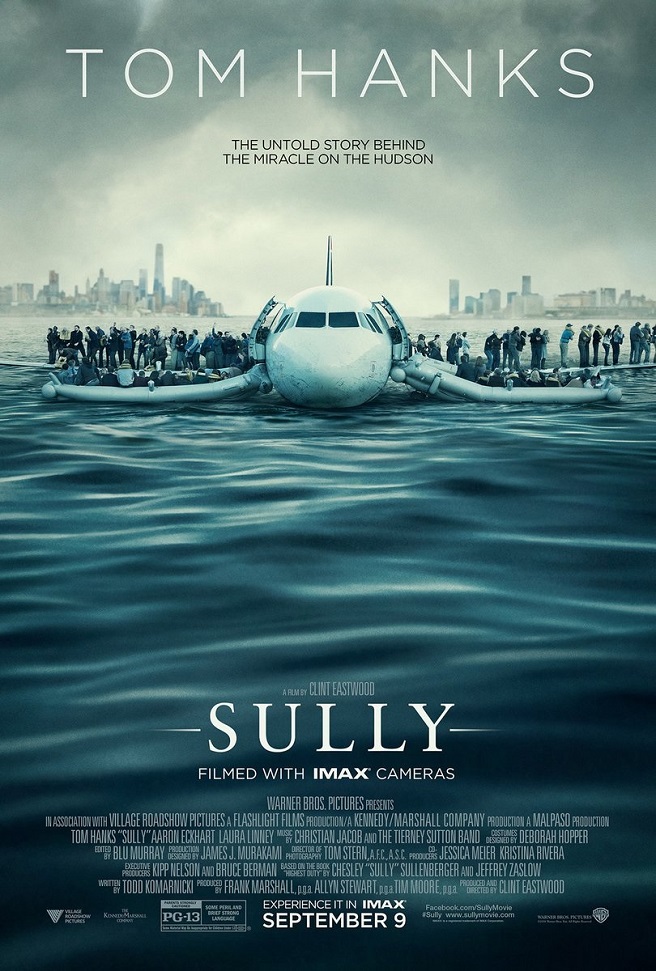
ORIGINAL POST: September 7, 2016
I REALLY LIKED Tom Hanks in the Paul Greengrass movie, “Captain Phillips.”
There, that’s my review of the new film “Sully,” which opens this week, featuring Hanks as captain Chesley Sullenberger. He of “Miracle on the Hudson” fame, whose 2009 crash-landing into the icy river is widely hailed, for reasons not entirely clear, as the single most awesome, important, and unforgettable event in the history of heavier-than-air flight.
In other words, I’m not reviewing the movie. I can’t review it, because, in the interest of self-preservation, I’m afraid to see it.
It was all I could do to muster up the courage to take in the trailer. Which, in all honestly, had me wanting to see more. Once you get past the histrionics at the beginning — “No one warned us. No one said, you are going to lose both engines at a lower altitude than any jet in history.” — it’s a compelling little tease.
But thirty carefully culled seconds can be deceptive. I’ve been burned this way before. All I could do was shake my head. “Not bad,” I said to myself. “But do I have the stomach, or enough medication, to get through two full hours of this?“
Call me a coward, and maybe — hopefully? — I’ve got it all wrong. Remember, though, I have decades of precedent on my side. When Hollywood does airplanes, the results are always a mess, ranging from borderline realistic to off-the-wall preposterous. There have been almost no exceptions to this — save, perhaps, for the efforts of the aforementioned Paul Greengrass, whose “United 93” was a damn good movie that got most of the pilot stuff correct. Problem is, Greengrass isn’t directing “Sully,” Clint Eastwood is, and I have a bad feeling about this one.
A few years back, I had a similar reaction after the movie “Flight” came out. That’s the one where Denzel Washington pours himself drinks at the galley, then crash-lands his jet into a field after an inexplicable malfunction causes him to fly a series of inexplicable aerobatics. I had no intention of seeing it. Readers (and a magazine editor or two) kept badgering me, though, and in time I gave in. A mistake, that was. Then, a couple of years later, in one of the most unforgivably misguided moments of my life, I actually gave the film a second try. I watched it again, and it was even more infuriating the second time around.
And did they have to call it “Sully?” Couldn’t they have picked a better title? For that matter, couldn’t they have picked a better story? The very premise of the movie is based on a myth: the idea that only the most skillful and fearless ace was able to save flight 1549 from all but certain doom. “Miracle on the Hudson” and all that. What Would Sully Do? And for this allow me to cannibalize a segment from my book:
When the ill-fated jet took off from New York’s La Guardia airport, first officer Jeffrey Skiles had been at the controls. When the engines quit, at a little more than 2,000 feet above the ground after a collision with Canada geese, captain Sullenberger took over. There’s no reason a copilot can’t continue flying in an emergency, but in this case most of the primary instruments on Skiles’ side of the cockpit would have failed from loss of power. Sullenberger took the controls because, really, he had to.
Determining a place to land was urgent to say the least. A turn-back to La Guardia was deemed either too risky or downright impossible, as was continuing westward toward Teterboro airport in New Jersey. The choice, then, was either a crash landing in the middle of one of the most built-up cities in the world, or a ditching in the ice-cold Hudson River. The latter was hardly ideal, but it was clearly the better option and would have to do.
From there, Sullenberger would adjust the plane’s pitch to maintain an optimal glide speed. The trickiest part of the whole thing would be calculating the correct speed and altitude to begin the flare — when to pitch the nose up and break the descent. Flare too early and the plane could stall or drop hard into the water. Keeping the wings level would also be critical, lest the plane flip, roll inverted, or otherwise break up, with certain loss of life.
Well done.
Just the same, I’m uneasy at calling anyone a hero. Nothing they did was easy, and a successful outcome was by no means guaranteed. But they did what they had to do, what they were trained to do, and what, presumably, any other crew would have done in that same situation.
And seldom has the role of luck been adequately acknowledged. Flight 1549 was stricken in daylight, and in reasonably good weather that allowed the crew to visually choose a landing spot. Had the engines quit on a day with low visibility, or over a crowded part of the city beyond gliding distance to the river, the result was going to be an all-out catastrophe. No amount of skill would matter. They needed to be good, but they needed to be lucky, too. They were both.
Sullenberger, to his credit, has been duly humble, acknowledging the points I make above. People pooh-pooh this as false modesty or self-effacing charm, when really he’s just being honest. He also has highlighted the unsung role played by his first officer. There were two pilots on board, and both needed to rise to the occasion. And let’s not forget the flight attendants, whose actions were no less commendable.
There’s little harm in celebrating the survival of 155 people, but terms like “hero” and “miracle” shouldn’t be thrown around lightly.
A miracle describes an outcome that cannot be rationally explained. Everything that happened on January 15th, 2009, can be rationally explained. Passengers owe their survival not to the supernatural, but to four very earthly factors. They were, in descending order (pardon the pun): luck, professionalism, skill, and technology.
And look at the movie poster for a minute. There’s almost a religious sheen to it: the airplane looking bird-like, angel-like, with its outstretched escape slides, backdropped by a romanticized gray Gotham. It’s just a little much. (The plane is also facing the wrong direction. If that’s lower Manhattan on the right — including a mysteriously completed One World Trade Center tower, which in real life wasn’t finished until long after 2009 — we should be looking at the tail, not the nose.)
A hero, meanwhile, describes a person who accepts a great personal sacrifice, up to and including injury or death, for the benefit of somebody else. I’d never suggest that Sullenberger and Skiles were merely “doing their jobs.” It was far beyond that. But I didn’t see heroics; I saw an outstanding execution of difficult tasks in the throes of a serious emergency.
And there’s a longstanding unfairness to the whole pilots-as-heroes thing that gets under my skin. Over the years, there have been countless aviators who, confronted by sudden and unusual danger, performed admirably, with just as much or skill and resolve as can ever be hoped for. But they weren’t as lucky. By virtue of this and nothing more, they and many of their passengers perished.
(Soundtrack for this post: “Nobody’s Heroes,” one of the brashest records of the 1980s, from the long forgotten Belfast rockers Stiff Little Fingers.)
As the trailer tells it, “Sully” goes beyond the flight 1549 accident itself. This is the proverbial “untold story” of everything that happened afterward, and how Sullenberger, the man, endured it. It explores some of the skepticism and second-guessing that dogged the investigation. Did Sullenberger and Skiles do the right thing by aiming for the Hudson? Is it true they could have, or should have, made a U-turn and glided back to La Guardia? Is it true that one of the plane’s engines was still functioning?
Sure, all of that is interesting stuff. To a point. Forgive me, but of all the harrowing things that have happened to planes, pilots, and their passengers over the years, this is the best the movie-makers could come up with? Why don’t we have a John Testrake movie? Why don’t we have a Bernard Dhellemme movie? Who, you ask? John Testrake was the captain of TWA flight 847. In 1985, he and his passengers were hijacked by Hezbollah militants, forced to fly back and forth between Algeria and Beirut, then held captive for two weeks. Captain Dhellemme, like John Testrake before him, was also the central character of one of the most riveting hijackings of all time.
And others too. Chances are you’ve never heard of them — maybe because their planes didn’t come splashing down alongside the world’s media capital.
I can’t help thinking about Al Haynes, the United Airlines captain who, ably assisted by three other pilots, deftly guided his crippled DC-10 to a crash landing in Sioux City, Iowa, in 1989. A disintegrated engine fan had bled out all three of the plane’s hydraulics systems, resulting in a total loss of flight controls. Using differential engine power to perform turns, all the while battling uncontrollable pitch oscillations, that Haynes and his crew were able to pull off even a semi-survivable landing (112 people were killed; 184 survived) is about as close to a miracle as you can get.
How about Donald Cameron and Claude Ouimet, the pilots of Air Canada flight 797, who managed — barely — to get their burning DC-9 onto the runway in Cincinnati in 1983? It took so much effort to fly the plane that they passed out from exhaustion after touchdown.
Or consider the predicament facing American Eagle captain Barry Gottshall and first officer Wesley Greene three months earlier. Moments after takeoff from Bangor, Maine, their Embraer regional jet suffered a freak system failure resulting in full and irreversible deflection of the plane’s rudder. Struggling to maintain control, they returned to Bangor under deteriorating weather. Visibility had fallen to a mile, and as the 37-seater approached the threshold, Gottshall had to maintain full aileron deflection — that is, the control wheel turned to the stops and held there — to keep from crashing into the woods. Theirs was pure seat-of-the-pants improv. A fully deflected rudder? There are no checklists, and no procedures, for that one.
Me, I’ll take a daylight ditching in the Hudson over any of those three.
For the record, U.S. Airways 1549 was one of a handful of intentional “water landings” involving a commercial airliner in the modern era…
— In 1956, Pan Am flight 943, a Boeing Stratocruiser, ditched in the Pacific northeast of Hawaii, with only minor injuries.
— In 1963, an Aeroflot jet splash-landed in the Neva River outside Leningrad. Everybody on board survived.
— In 1970, an Overseas National Airways (ONA) DC-9 bound from New York to St. Croix ditched in the Caribbean after running out of fuel. Twenty-three people were killed and 40 were rescued.
— In 1996, an Ethiopian Airlines 767 went down off the Comoros Islands after running out of fuel during a hijacking. Video taken by tourists at a nearby beach shows plane slamming into the water and cartwheeling into pieces. At the moment of impact, the pilots and hijackers had been wrestling for control.
— In 2002, a Garuda Indonesia 737 ditched in a river near Yogyakarta, Indonesia, after both engines quit during a severe rainstorm. A flight attendant was killed.
— In 2006, a Tunisian ATR-72 turboprop crashed into the Mediterranean off the coast of Sicily. Twenty-three people survived.
— In 1977, a hijacked Boeing 747 owned by the Stevens Corporation plunged into the Bermuda Triangle and quickly sank. Miraculously, the cabin remained intact, leaving the occupants trapped alive at the bottom of the ocean. They were later rescued through the ingenious use of giant flotation balloons.
Oh, wait, that last one was the movie “Airport ’77.”
And this one.
Note: portions of this story appeared previously in the online magazine Salon.
Related stories:
AIR TRAVEL IN ART, MUSIC, AND FILM
PILOTS, ALCOHOL, AND FARCE. A LOOK AT THE MOVIE “FLIGHT”



